“I’ve never been in a job where I had to take a helicopter to talk to people about nutrition,” Allison Sosna tells me with a laugh. Sosna is the Director of Nutrition for World Central Kitchen, a nonprofit organization founded by Chef José Andrés in 2010 to provide meals in areas in need of disaster relief. We’re speaking by phone, Sosna from her post in Washington D.C., as she recounts some of the more unusual circumstances in which her unique job has found her.
“There was one day where in twenty-four hours during the Bahamas mission, I was on a plane, got into a helicopter to go to the island of Abaco, and then delivered meals by speedboat,” she says. “I bet you no other nutritionist can say that. I felt like Indiana Jones.”
But Sosna never intended to be an adventurer. In fact, she never intended to be a chef. “Food was very clinical,” she remembers of her eating habits earlier in life, especially as a collegiate athlete. “I paid a lot of attention to the fats and calories and making sure I was getting a decent amount of everything.” Food was fuel, but hardly more.
It wasn’t until a study-abroad trip to Italy that Sosna found another reason to appreciate eating. “I was so taken by the culture and the people there,” she says. “Not necessarily the food, but how food served as a catalyst for conversation and how it created community.”
That was the launchpad for Sosna. With both feet back on the ground in the U.S., she began pursuing a path that would ultimately land her high above the Bahamian islands, and beyond. That Sosna was driven more by community than culinary pyrotechnics informed the types of jobs she pursued in the food space. After a few gigs in commercial restaurants and fine dining kitchens, Sosna—who also has a degree in sociology—made a shift, returning to the inspiration she discovered in Italy. She recalls thinking, “I’m sick of feeding rich people. How do I give back to my community?” A chance to do so presented itself with D.C. Central Kitchen, a nonprofit organization that, according to their website, works in part to prepare “adults with high barriers to employment for culinary careers.”
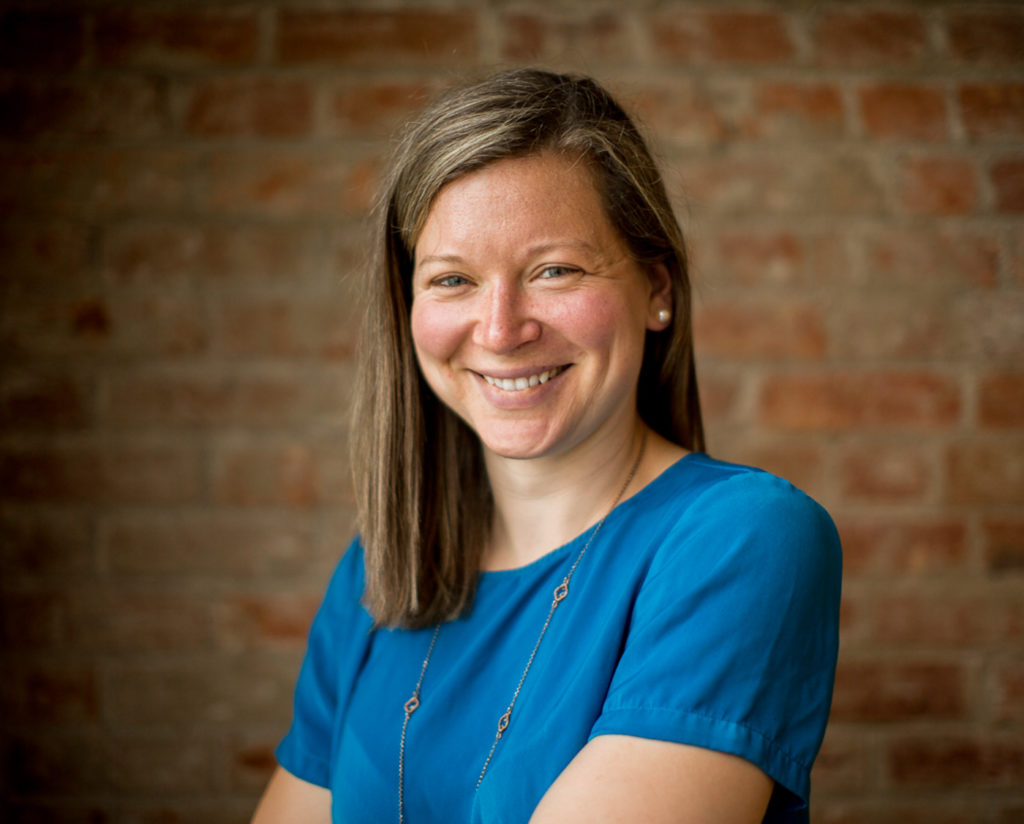
The timing was ideal. It was 2009. First Lady Michelle Obama was about to roll out her Let’s Move initiative, and the conversation around what was appropriate for feeding school kids coincided with a new opportunity at D.C. Central Kitchen. “We had public schools interested in our program. Mind you, we were not equipped for school food; you’re talking about policy and federal guidelines and thousands of meals a day, and that’s not what we did then,” Sosna says. Still, the group took the chance, responding to a request for proposal and doubling down on their efforts. In less than a year, the organization was working with eight schools.
Sosna remembers the majority of children in those settings were on free or reduced lunch programs offered to low income households. She began considering how she could do more to support those families, and in 2012 launched her own nonprofit, Microgreens. At the mission level, the goal was to teach kids about food and cooking. But Sosna also hoped the education would inspire them to request healthier choices at home, and ultimately encourage parents to make better decisions for their families.
During an eight-week course, students were instructed to cook on a budget of $3.50 per meal, per family of four. “One of the first things they learned was to butcher a whole chicken,” Sosna tells me. Each interactive weekly class would apply a new preparation and technique, beginning with chicken soup, then chicken salad, and chicken stir fry—until the entire animal was utilized. And beyond kitchen skills, Sosna recalls the fulfillment students felt at the end of the program, when presented with a certificate of completion. “There was this [sense of] pride,” she says. “That energy spreads across the volunteers. It impacts the teachers and the parents.”
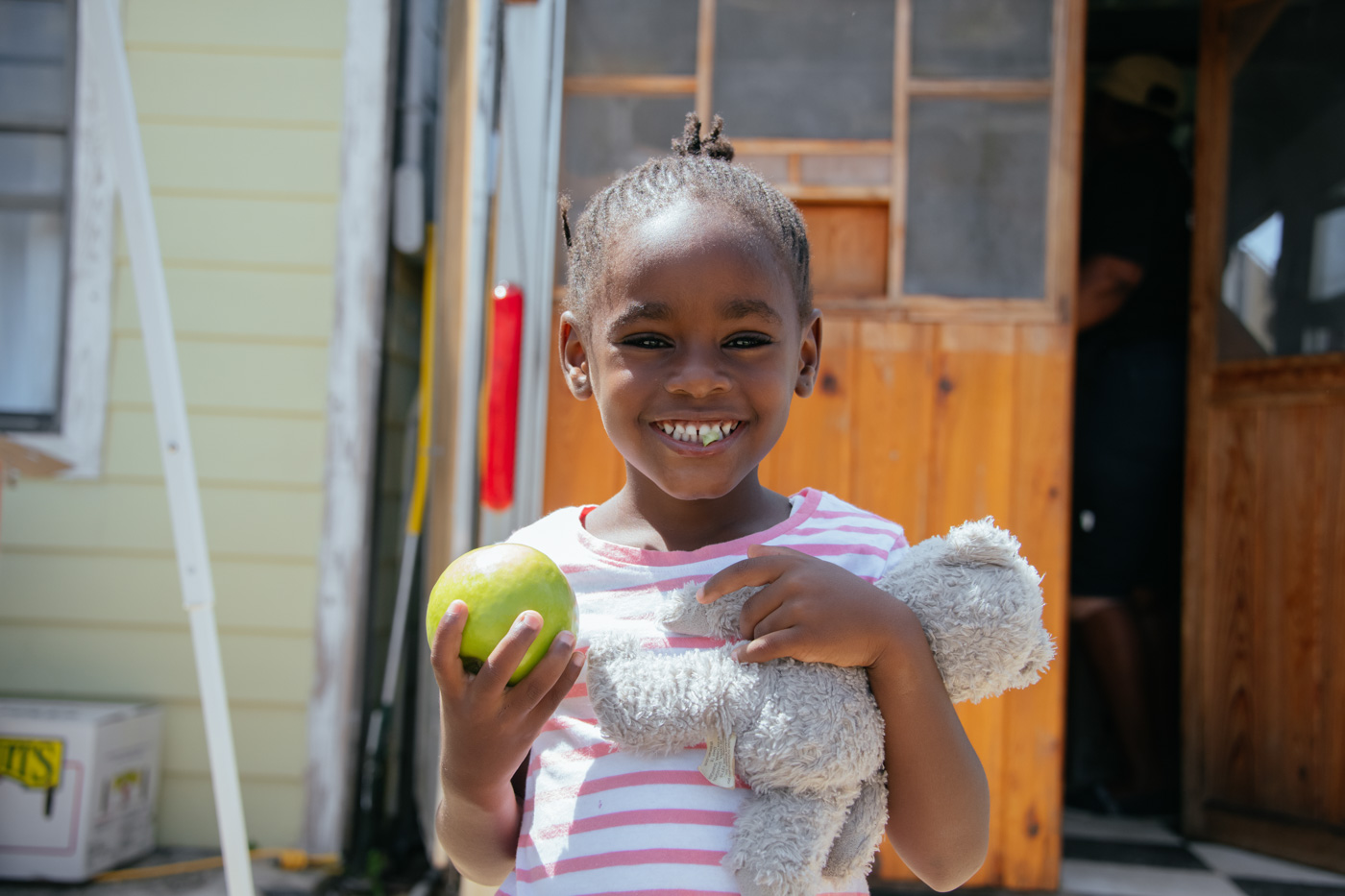
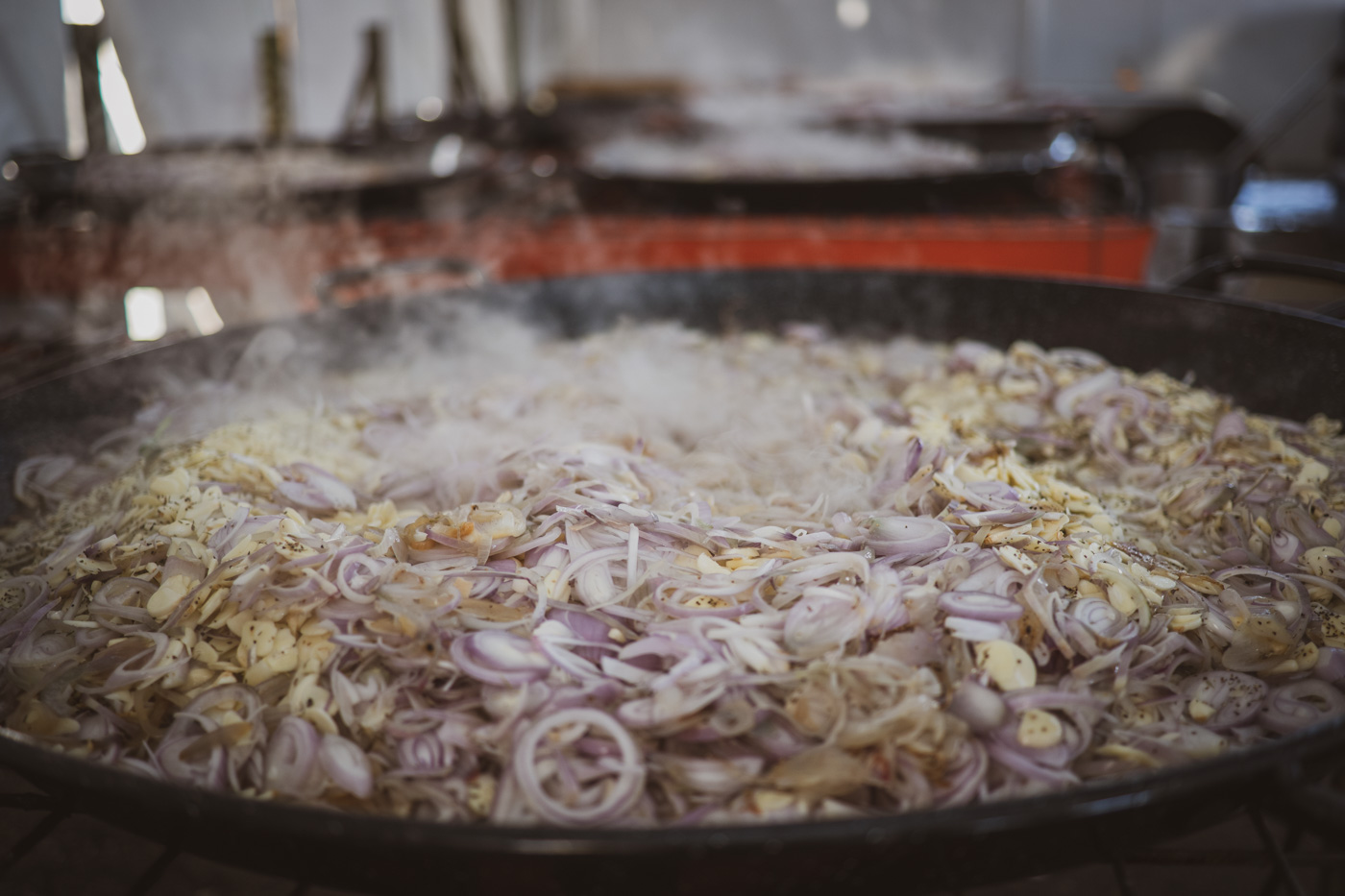
——
After four years operating Microgreens, Sosna was again looking to grow professionally. She relocated to New York City to pursue a graduate degree while working part time for the New York City Department of Health. There, she learned how to implement healthier options in hospital settings, experience that would be prove especially useful in due time. It was during that period she crossed paths with Nate Mook, CEO of World Central Kitchen. At the time, Mook tells me, the organization was “really excited about developing an entirely new program that was incorporating nutrition into the work we’re doing in crises.”
Sosna recalls an early conversation with Mook. He had gone on a trip during which WCK was distributing fresh produce to those impacted by the June 3rd, 2018 eruption of the Volcán de Fuego in Guatemala. Mook explained an observation: that considering all other variables were unchanged, he felt he saw a change in the morale and the behavior of the children, just by having fruit a couple of times a day. It was a significant impact made by what seemed like such a simple change, and Mook felt the team could explore in a substantive way.
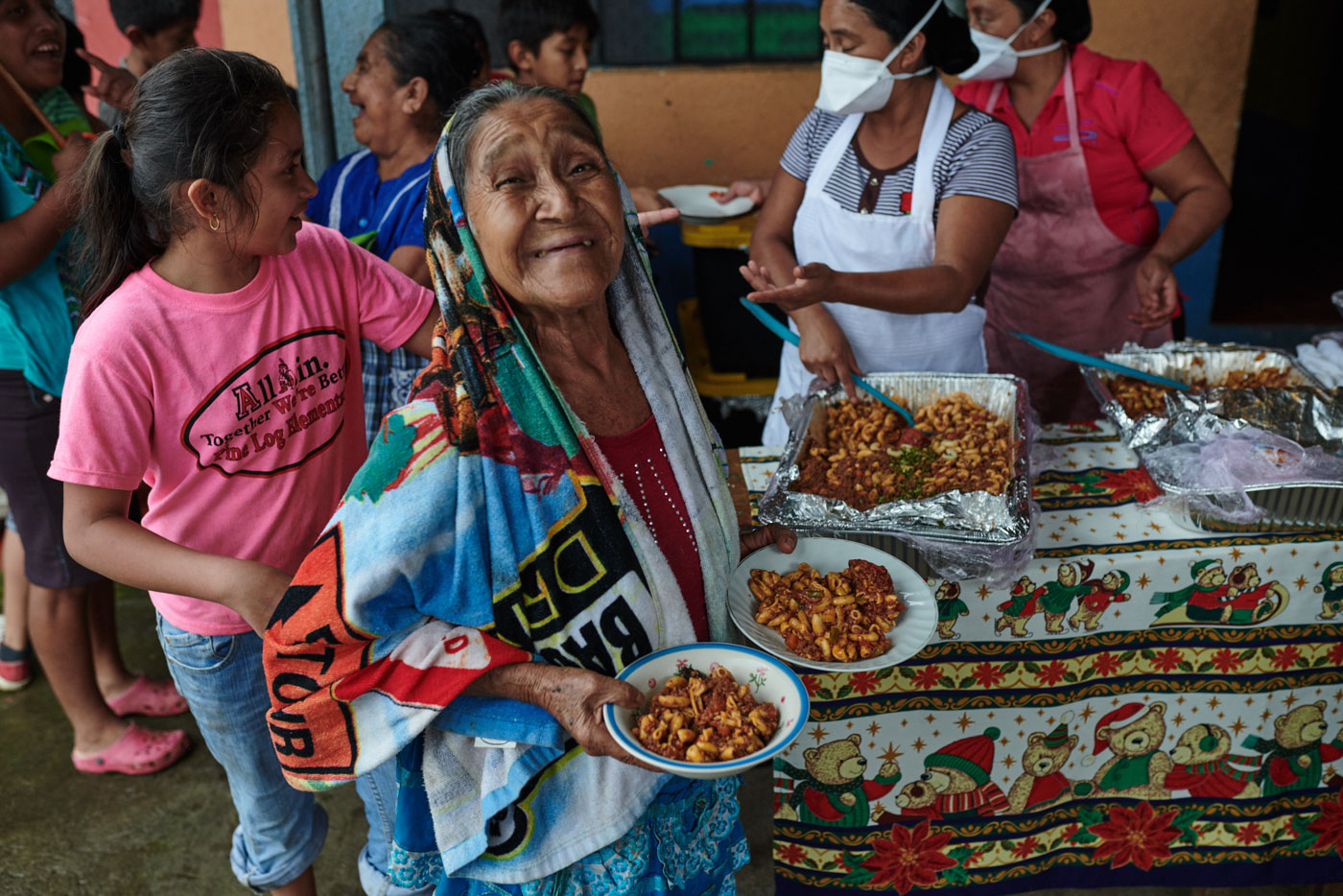
Later, during the government shutdown in January 2019, World Central Kitchen provided meals to federal employees and their families. Mook invited Sosna to help with the effort, and shortly after, she was offered a formal position. The fact that there wasn’t a role already in place meant it was somewhat in Sosna’s hands to develop, which she says she was able to do with strong support. “There was no job description, but there was this trust,” she says. “For a lot of the employees at WCK, that culture is what makes us thrive. It’s what makes us so innovative. We are all given trust. That is empowering.”
Sosna got to work on two main goals, beginning with disaster relief. “This job is first and foremost, fieldwork,” she tells me. “It’s about understanding the landscape, the disaster and the population, and then saying, culturally, what foods are we eating here?”
In early 2019, WCK’s Chef Relief Team activated in Colombia, serving Venezuelan refugees who fled their homes, and the first crisis Sosna was involved in was providing relief and meals to those individuals. She communicated with chefs on the ground, trying to understand how to make meals “immediately healthier.” Her strategy was to create a spreadsheet tool that could be referenced by those chefs in the field; it listed all available ingredients along with their respective vitamins and minerals. “I’m communicating in real time with chefs in Colombia, and getting real time feedback on what’s accessible and making notes of that,” she explains. The information helped them create meals with the highest nutritional impact tailored to the needs of the population, and it paid off. “Immediately, we saw an impact of increased iron and increased fiber,” Sosna recalls.
It was a shift in the perspective that furthered the original mission of WCK. Mook recalls Andrés’ observations about the type of food being prepared and served during disaster relief efforts. “It was really, at the end of the day, just focused on getting people calories and sustenance.” Mook explains, “In general, emergency response framework of the U.S.—specifically the first seventy-two hours—is focused on emergency rations, so processed food, snacks and chips—[Meals Ready to Eat], which are just terrible for you.”
The work of WCK involves ensuring those meals are more than that—that they’re fresh, prepared within hours, and packed with nutrients. It’s also critical that they’re culturally appropriate, which means that while the team attempts to create scalable and replicable recipes, not all meals are usable in every scenario.
Working within these parameters requires consistent communication, delivering the right tools to boots on the ground, and the ability to adapt when necessary for nutritional impact. Sosna uses software to analyze a recipe for nutritional values, measuring the baseline of a meal and speaking with chefs in the field to monitor progress. “They add and edit that meal, so I’m tracking those exact numbers,” she says. Through this collaboration, the field team is able to share what they’re able to purchase and cook. She shares an example in which, following a few weeks of close monitoring, results showed improved levels of iron and zinc.
Evaluation is a major component of Sosna’s work for the long term, and the WCK team has worked with medical volunteers to gauge impact. In Venezuela, Sosna explains, “Some of the volunteers with a medical background are serving and taking biometrics—height, weight, the width of the upper arm.” Measurements were collected simultaneously with the start of WCK’s food service, and in one year, results showed a reduction of “wasting,” which Sosna explains is a form of acute malnutrition in which muscle and fat tissue atrophy. “While we cannot say that our food is the reason for reducing wasting, food coupled with medical care is shown to reduce wasting, which is huge,” Sosna says. “It shows that taking care of your body both with sustenance and preventative care can improve a child’s life in a matter of months.”
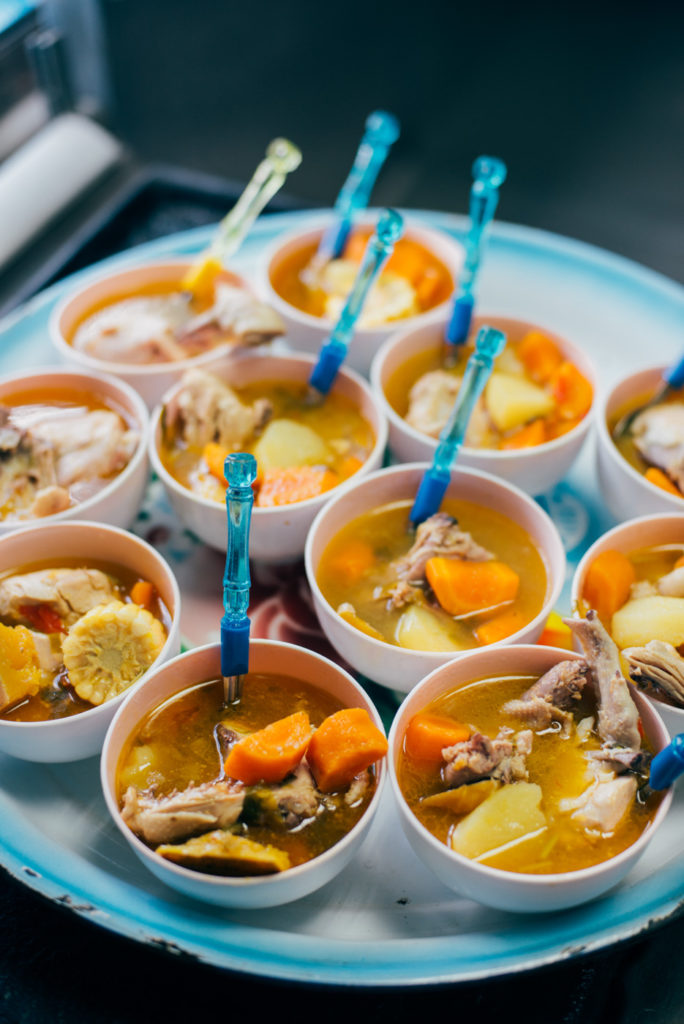
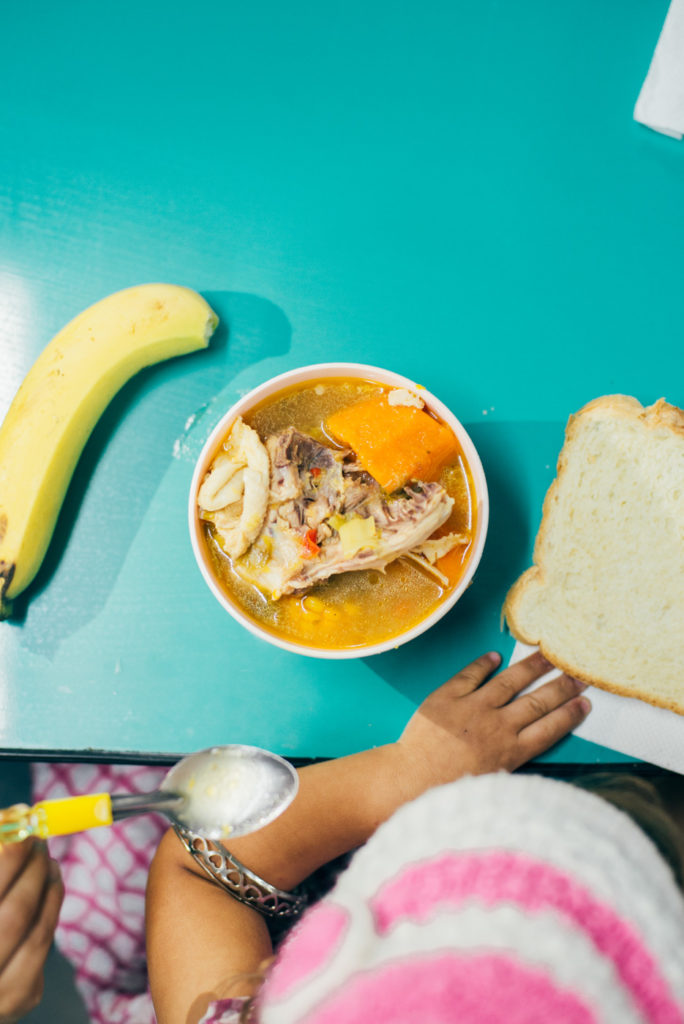
While the work is often reactionary, the second component of Sosna’s job is proactive. In 2020, her goal is to more closely evaluate the dietary needs of unique populations being served, particularly women who are pregnant or nursing, and children under the age of two. “They are the most important demographic,” Sosna says, and describes the research she undertook to begin preparing meals for their specific needs. She requested that WCK sponsor her on a trip to Tijuana, where the organization has a kitchen and works with several shelters, to interview women who fit that profile. The idea was quickly approved, and she soon found herself in Mexico conducting more than thirty interviews.
“I brought this tool called ‘Eat the Rainbow,’ and it has the whole spectrum of colors, and the fruits and vegetables that are those colors,” Sosna explains. She presented the tool to women to point out which colors they weren’t seeing in their diet to help inform meal creation. Following the Tijuana trip, she says, “I was able to take that information back to the chefs and say, ‘They’re not getting blue and purple. Can we afford blueberries? Can we cook with eggplant?’”
And while management provides support to Sosna, the team in the field can rest assured her advice and guidance will be practical and grounded. “I’m able to speak to them as a chef who has worked with serving high volumes before,” she says. The idea that a dietician or nutritionist would attempt to create plans and systems without that experience, she says, “is just not realistic.”
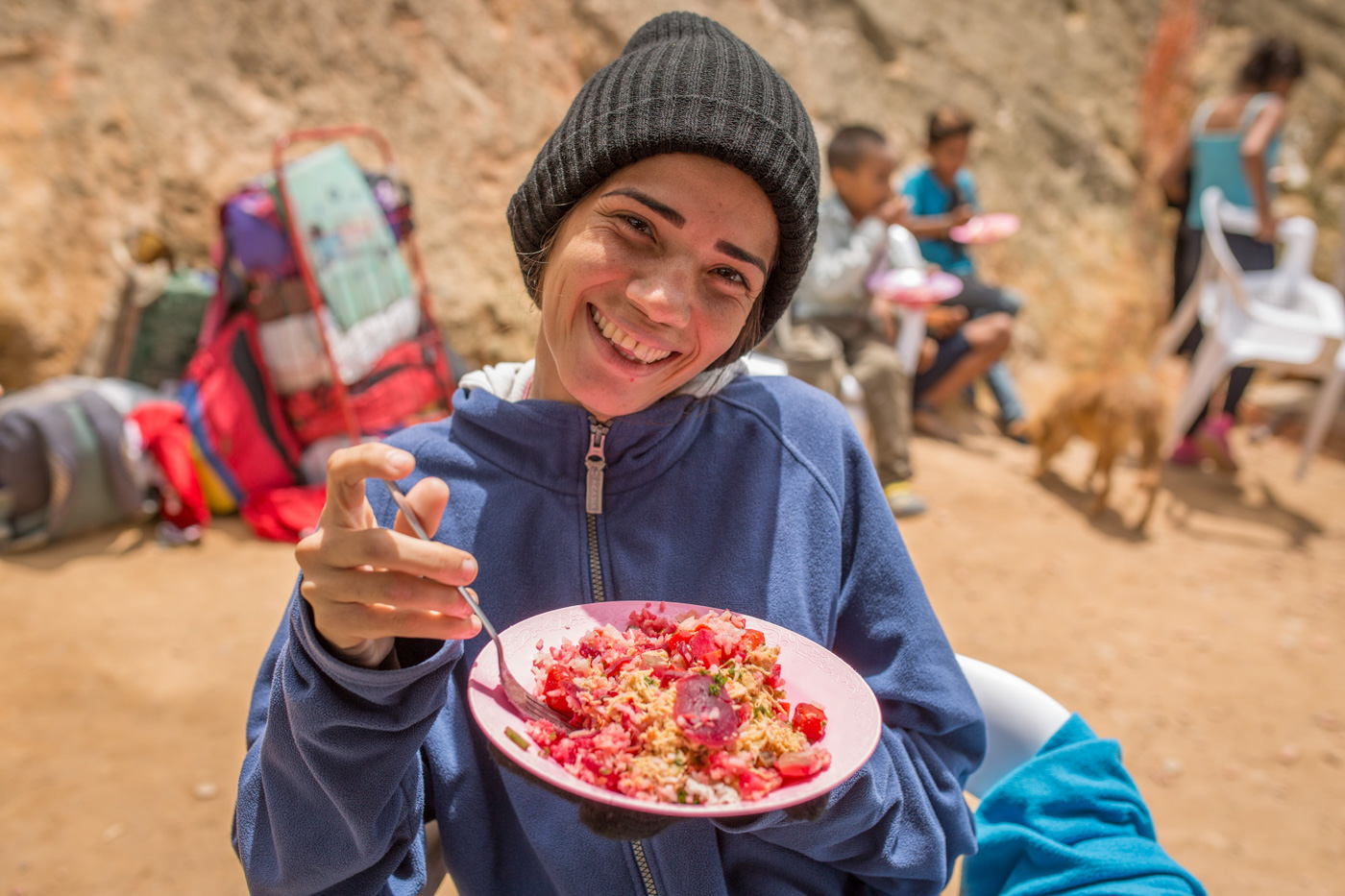
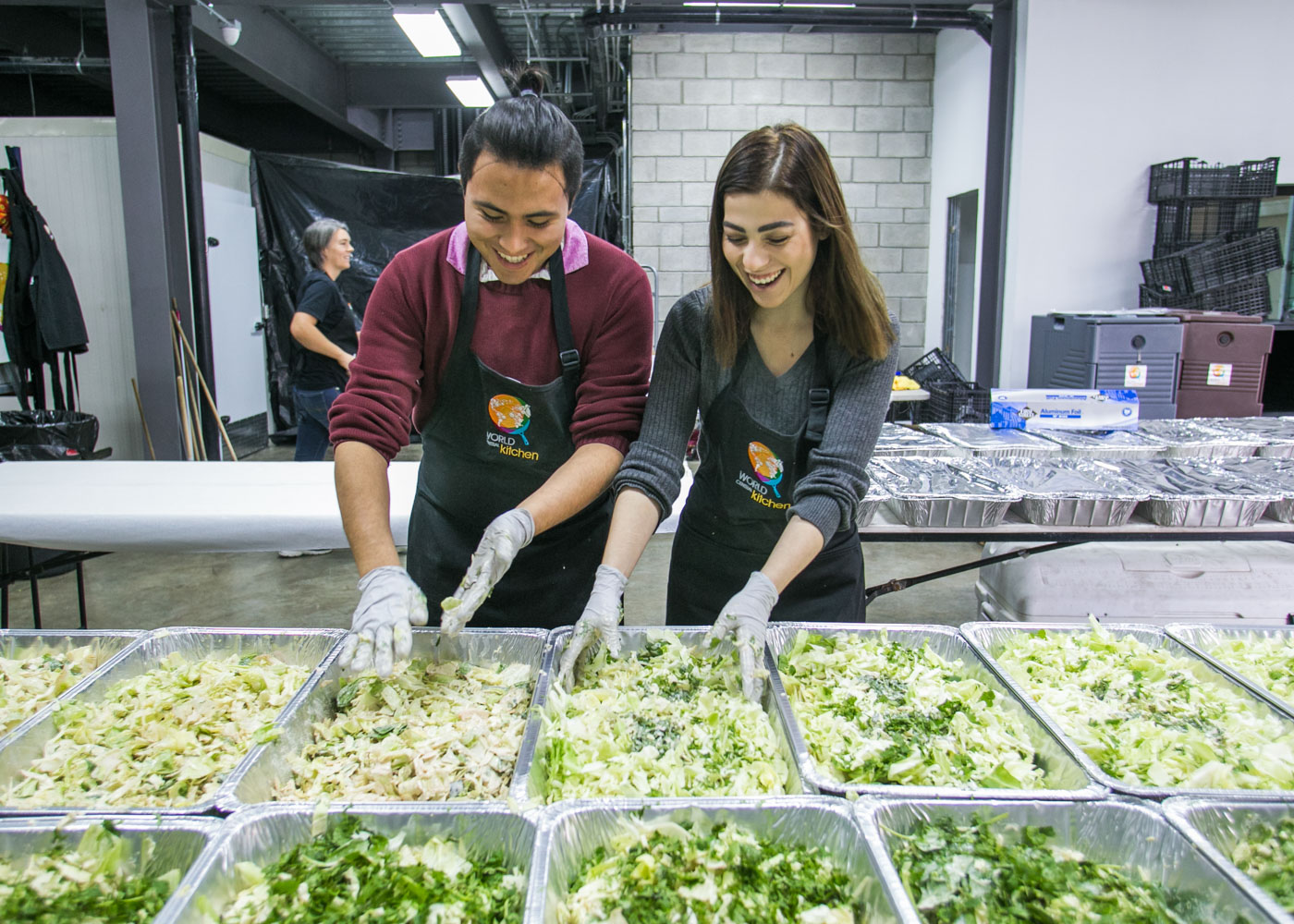
——
In a perfect world, perhaps Sosna’s role and WCK as a whole wouldn’t be necessary. But as Mook notes, “We’ve entered a new normal of constant disasters from wildfires to hurricanes to earthquakes to refugee crises.”
The team’s work is integral to cultures around the world, each with unique needs and nuances, and WCK has no presumption it can provide relief on its own. “We’re not a proprietary organization,” Mook says. “Allie has been working with the FDA, with Red Cross, Feeding America, and other disaster relief organizations in the field.” It is his hope that the systems WCK and Sosna are building will be scalable and influential. “We really want to change the way everybody is looking at this issue. Because we’re not everywhere.”
World Central Kitchen, through initiatives like the ones Sosna spearheads, can serve as a blueprint. “Our goal is the way we’re operating is going to become the expectation, not only for our fellow Americans, but also fellow citizens of the earth. We shouldn’t have lower standards, because it is possible to do this and to do it right,” he says. “There’s certainly a long way to go and a lot to do, but it’s great to have Allie here really leading the charge.”
It’s the kind of trailblazing work that might make Indiana Jones proud. For chefs and food professionals who seek alternate ways to feed people and make an impact, Sosna is an example. For those impacted by disasters, her work helps make the difference between simply surviving, and a healthful recovery.
Photography provided by World Central Kitchen

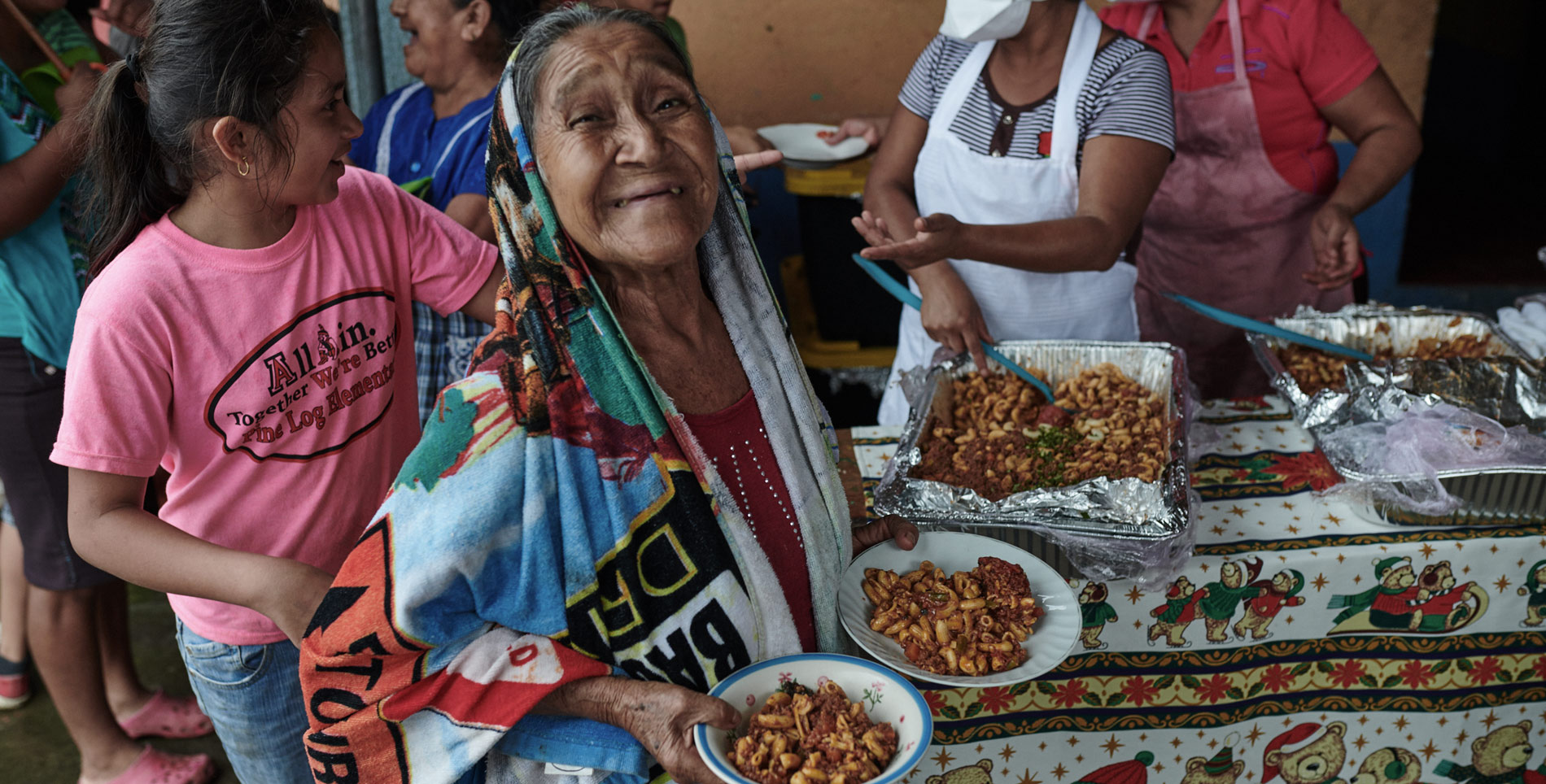

Our comments section is for members only.
Join today to gain exclusive access.